News
Vietnamese Fruit
Update: 12/19/2014
INCREASING THE PROMOTION AND DEVELOPMENT OF SPECIALIZED FARMING AREAS
With advantages in climate and soil, Vietnam has a lot of large areas specializing in growing fruit trees, of which the South is considered the largest fruit-growing area in the country. According to the Cultivation Department of the Ministry of Agriculture and Rural Development, the South has over 400,000ha of fruit trees which yield over four million tonnes of fruit a year, (accounting for 52.6% of the acreage and 57.41% of the output of the country). The provinces of Tien Giang, Dong Nai, Vinh Long, Ben Tre and Dong Thap have the largest cultivated areas in the South. Notably, more and more growers have applied the advanced production models under the standards of VietGAP (Vietnamese Good Agricultural Practices) and GlobalGAP (Global Good Agricultural Practices) to create varieties of special kinds of fruit with high export value, such as Nam Roi pomelo, Hoang Hau dragon fruit, Tan Trieu pomelo, Lo Ren star apple and Hoa Loc mango.
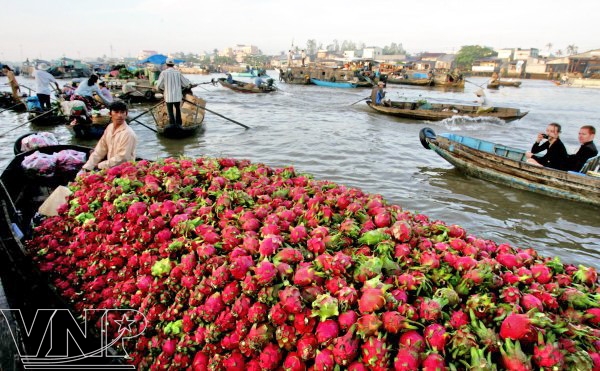 Hoang Hau dragon fruit at Phung Hiep Floating Market in Can Tho: Photo: Trong Chinh 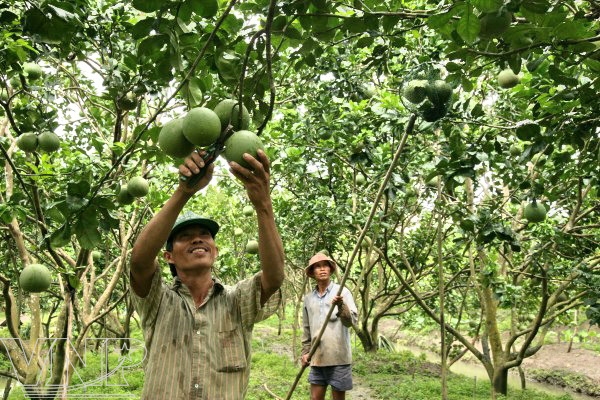 A green-skinned pomelo garden in South Vietnam. Photo: Minh Quoc 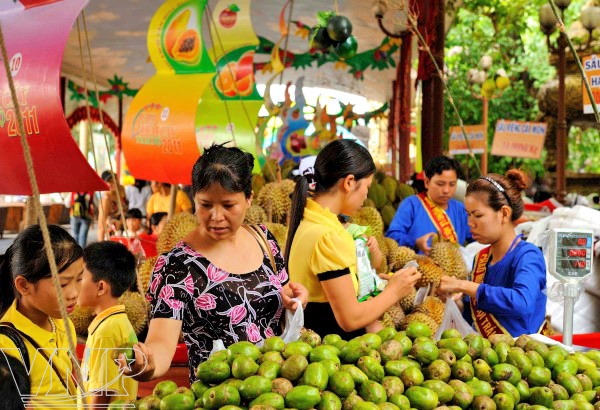 At the Southern Fruit Festival 2011. Photo: Nguyen Luan 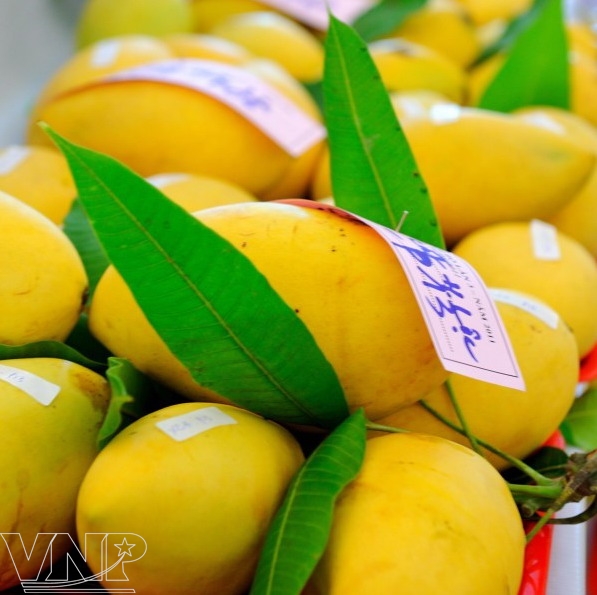 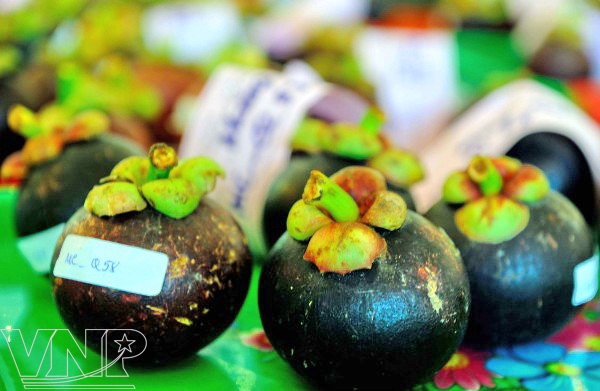 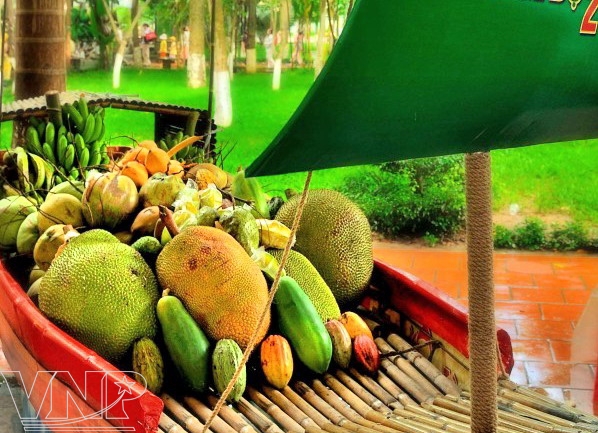 Special fruit in the South. Photo: Nguyen Luan  Cai Tau lansium domesticum, a well-known specialty of U Minh area in Ca Mau. Photo: Minh Quoc 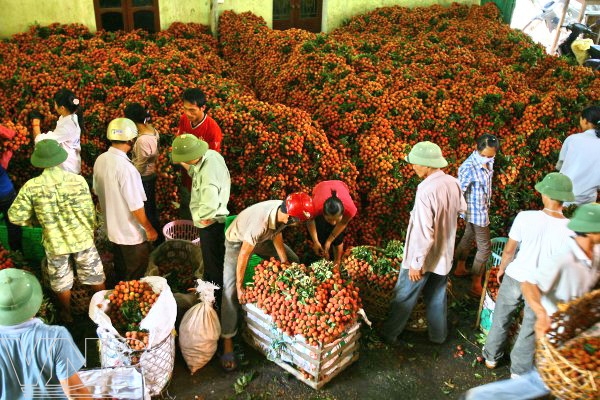 Bac Giang litchi. Photo: An Thanh Dat  Bac Giang litchi are transported to many cities and provinces for consumption. Photo: An Thanh Dat |
As planned, by 2020, the area under fruit tree cultivation in the South will reach 418,000-438,000ha which will yield over five million tonnes of fruit a year. The total export turnover of fresh and processed products will reach 500 million USD a year. To achieve this goal, the local authorities are promoting the popularization and development of large specialized farming areas in the mode of commodity production under the sustainable development models meeting VietGAP and GlobalGAP standards. Accordingly, each locality will attach importance to production associated with biological safety and focus on developing the key plants to enhance competitiveness.
| According to the Cultivation Department of the Ministry of Agriculture and Rural Development, currently the whole country has approximately 900,000ha of fruit trees with a total output of about 10 million tonnes of fruit, in which the area for growing fruit trees for export is 255,000ha, yielding over 400,000 tonnes of fruit. The total export turnover is estimated to reach nearly 300 million USD a year. As planned, by 2020, the total area of fruit trees throughout the country will reach 1.1 million hectares and the total export will reach 1.2 billion USD a year. |
To increase market penetration, the growers as well as managers in the South have undertaken various forms of promotion, organizing the Southern Fruit Festival. This is a great annual event in Ho Chi Minh City. So far, the festival has been held 16 times. The festival has become an effective forum for the growers, scientists and managers to popularize and introduce their achievements and expand the market.
Although the fruit market in the North is not as busy as that in the South it has its own strength. For instance, litchi has long been a trademark of Bac Giang and Hai Duong Provinces. Bac Giang has over 40,000ha under litchi cultivation, accounting for 80% of the province’s agricultural area. In 2011, the province reached an output of about 200,000 tonnes of fresh litchi. Luc Ngan District alone had an output of about 90,000 tonnes.
According to Bui Van Hanh, Vice Chairman of Bac Giang Provincial People’s Committee, litchi continues to be a key plant of the province. The area for growing litchi under VietGAP standards was expanded to 6,000ha, including 5,700ha in Luc Ngan, an increase of 1,700ha compared to the previous year.
Now, 40% of litchi output is consumed domestically and the rest is for export. Apart from the traditional market of China, Luc Ngan litchi have been exported to Laos and Cambodia, and are approaching more lucrative markets, such as Europe, the US and Japan.
DEVELOPING THE PROCESSING TECHNOLOGY TO CREATE A SUSTAINABLE DIRECTION
Taking advantage of abundant sources of raw materials of high export value, many fruit processing enterprises in the country have availed themselves of every opportunity to invest in technology and human resources to process and export fresh fruit to the world market. Apart from exporting fresh fruit, they have conducted research to produce many types of processed fruit to provide for the market, such as dried fruit, moderately dried fruit, salted fruit, frozen fruit, canned fruit, fruit juice and fruit wine.
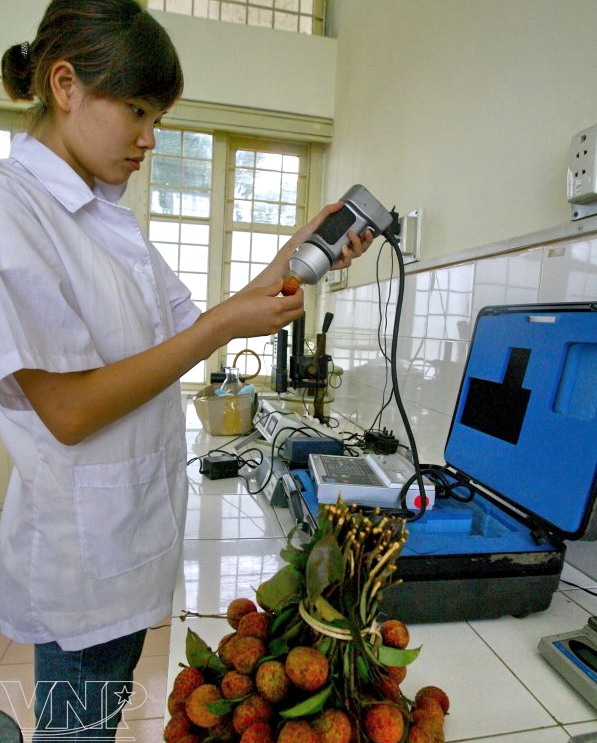 Checking the quality of litchi by modern equipment. Photo: An Thanh Dat 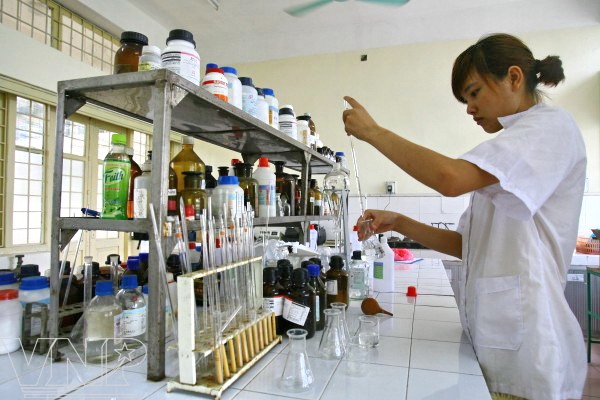 Studying the methods to preserve fresh fruit. Photo: An Thanh Dat 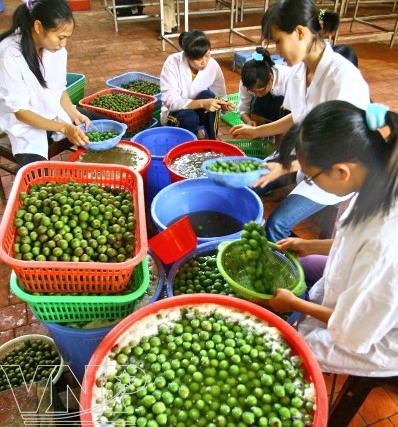 Processing fresh dracontomelum fruit to produce sugared dracontomelum. Photo: An Thanh Dat 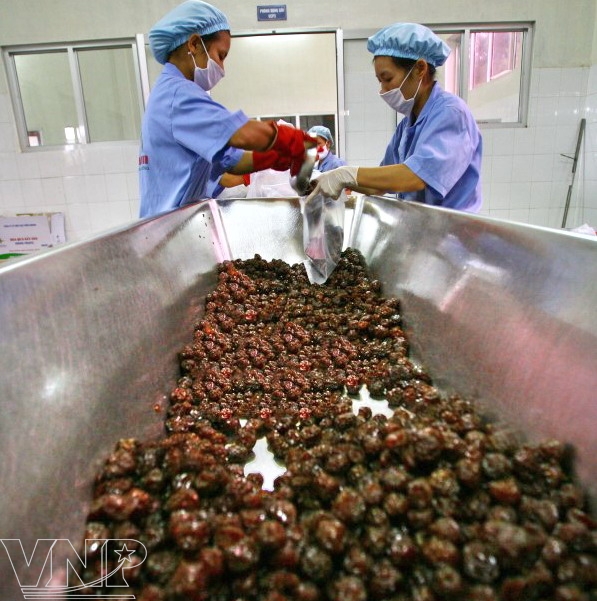 Packing moderately dried plums. Photo: An Thanh Dat 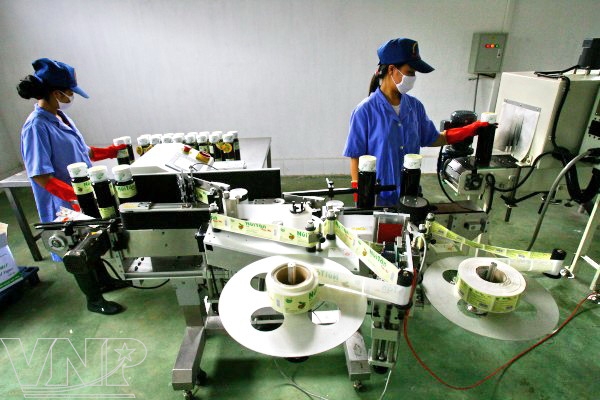 Labeling line of processed fruit products. Photo: An Thanh Dat  An apricot wine bottling line of Sannam Company. Photo: An Thanh Dat 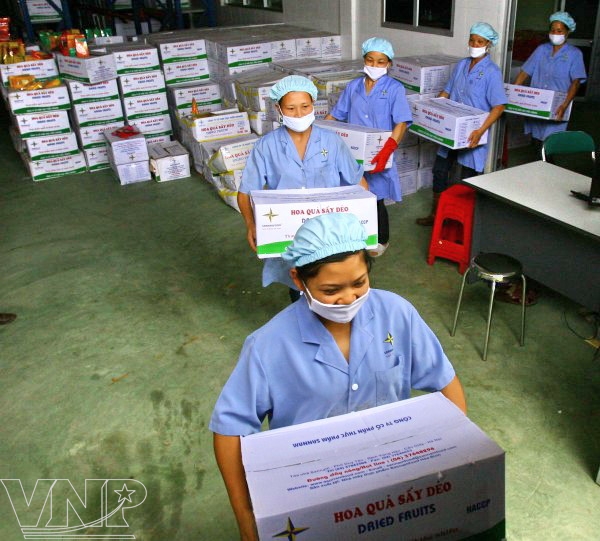 Storage of processed fruit products of Sannam Company. Photo: An Thanh Dat  Moderately dried papaya of Sannam Company. Photo: An Thanh Dat |
Sannamfood Hoa Binh Foodstuff Factory under Sannam Foodstuff Joint-Stock Company is an example. The factory focuses on exploiting the material sources from the stable existing material regions in the country to produce different kinds of processed fruit products to meet the market demand.
According to Truong Minh Hoang Anh, Director of Sannamfood Hoa Binh Foodstuff Factory, the factory produces all kinds of fruit in every season. Normally, its main production time is when the fruit are ripe and harvested. At that time the fruit has the highest sugar content and has a beautiful appearance. When we visited the factory it was the main harvest time of plums in Moc Chau (Son La), so the processing chain of the factory worked at full capacity to produce dried plums.
Now, the factory uses the available material in the regions, such as plums in Moc Chau (Son La), mango (in the South), pineapples (in Bavi) and apricots (in Bac Kan) to produce dried fruits which are much sought after by customers. These include mangos, pineapples, papayas, plums, apricots, carambolas and bananas.
One of the vital requirements for the fruit processing enterprises is food hygiene and safety. Therefore, Sannamfood Hoa Binh Foodstuff Factory strictly monitors all the processing steps. The materials must have a specific origin. The fruit must meet the quality in color and maturity, and must be unbroken. The close processing cycle, from input to output must strictly comply with HACCP (Hazard Analysis and Critical Control Points) standards.
According to statistics, in 2010 there were about 60 fruit processing and preserving establishments and factories of industrial scale and tens of thousands of small-scale processing facilities in the mode of family businesses. As estimated, the number of fruit processing facilities will increase in the future, especially when the model of specialized cultivation of fruit trees develops throughout the country. This serves as a solid basis for Vietnam’s fruit processing sector to diversify products and increase profits.
If the material source is considered the first phase and the processing and preservation at the factory is considered the last phase, the research on processing technology is considered the intermediate phase which is not less important in the fruit processing chain.
According to Dr. Nguyen Thi Hang, Head of the Postharvest Technology Department of the Fruit and Vegetable Research Institute, along with the economic development, processed fruits and vegetable products are more popular in the market because they satisfy many requirements, such as the usability, food hygiene and safety, long-term preservation and diverse types and flavors. The volume of products and cost of transport are minimized.
She also said that the fruit-processing industry in Vietnam has the potential to develop in the future. Fresh fruit processing and preserving technology is one of the leading research objectives that the Postharvest Department is following to increase the export value of Vietnamese fruits.
Story: Huu Tuan - Photos: An Thanh Dat - Trong Chinh - Minh Quoc - Nguyen Luan - Trinh Van Bo












